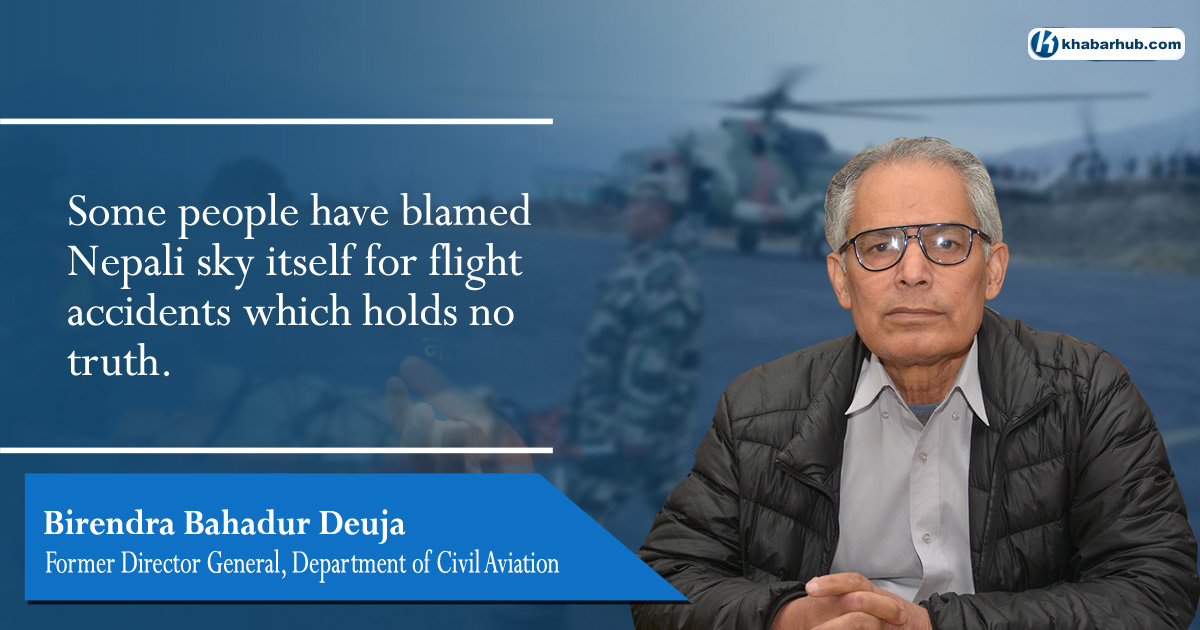0%
It is not easy to conduct flights in the hilly region of Nepal due to inhospitable terrains and inimical weather conditions.

In Nepal, flights are conducted under the Visual Flight Rule (VFR). As per this mode of operating a flight, a pilot observes the weather conditions before operating a flight. This could be the main reason behind frequent air crashes in Nepal.
There is no problem with the sky of Nepal, but the main problems are its rough terrains and volatile weather conditions.
Seven people, including Tourism Minister Rabindra Adhikari, died in an Air Dynasty chopper crash in Taplejung on Wednesday afternoon.
Taplejung chopper crash is one example among a series of air crash incidents in Nepali sky.
Problems with airports in the mountain/hilly regions of the country are they are not well equipped. Making them hi-tech is expensive as the flight frequency at such airports is low.
It is not easy to conduct flights in the hilly region of Nepal due to inhospitable terrains and inimical weather conditions.
Some people have blamed the Nepali sky itself for flight accidents which hold no truth.
Given the number of flight accidents in many countries across the globe, my own experiences and studies on flight accidents the number of air accidents is relatively low.
Even the countries having no mountains also face aircraft accidents. For example, there are cases of plane crashes during flights from one island to another due to inimical climatic conditions.
Problems with airports in the mountain/hilly regions of the country are they are not well equipped. Making them hi-tech is expensive as the flight frequency at such airports is low.
The claim from some quarters that air accidents in Nepal occur because used, and old aircraft are operated in Nepal is unfounded. Any aircraft need to undergo tests and certification before the operation.
One way of avoiding air accidents would be to install a meteorological system at the airports. This helps aircraft to relay information on changing weather conditions. At times what happens is that a flight takes off because the prevailing weather is good.
However, the weather can turn ugly over a short period. If the pilot/captain is notified of the latest weather development, that can avoid accidents.
The claim from some quarters that air accidents in Nepal occur because used, and old aircraft are operated in Nepal is unfounded. Any aircraft need to undergo tests and certification before the operation.
Air accidents do not always occur due to technical problems. Pilots are often aware of bad weather conditions. However, they take risks because they are in a hurry to return home. Similarly, politicians also sometimes impose pressure on pilots to operate flights even when the pilots are reluctant citing bad weather conditions. However, since they are in authority pilots give in to their pressure.